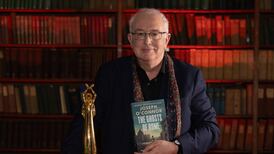See, swirl, smell, sip, savour. The internet is replete with the five Ss that explain the science of wine tasting. Here’s what’s behind each of those Ss.
See
Wine colour depends on grape variety, winemaking process, and age. Deep gold or brown white wines are likely to be over the hill or oxidised, as are pale brown red wines. A young cabernet sauvignon will probably be deep purple and opaque, while a pinot noir will be pale in colour. At one time all the books argued that a wine must be clear. Then along came pét nat and unfiltered natural wines, both of which can be cloudy. Does colour really matter? Not much. It does not mean that the wine will be sweeter or fuller-bodied.
Swirl
Swirling a wine around a glass brings it into contact with the air and releases all of those lovely aromas. Don’t pour too much wine or you’ll make a mess. Some wines continue to develop for hours after they have first been poured, so keep swirling. If you keep the base of the glass on the table and gently move it in circular motions, you will create an eddy. Decanting a wine is really just swirling and aerating in volume.
Smell
Once you have swirled, put your nose in the glass and have a good sniff. The aromas given off by the wine are important and give you a good idea of how the wine will taste. Some wines are fruity, others herby, some earthy or woody. Most are a combination of several. Many wine descriptions can seem ridiculous, but the writer is simply trying to convey a smell to the reader – not an easy thing to do.
READ MORE
Sip
Take a good mouthful. Professionals swirl the wine around in their mouth, often making a gurgling noise as they draw the wine over their tongue. This may seem bizarre but it is just another way of airing the wine. As you drink, think about the flavours, the acidity, the alcohol. Do they all come together to form a beautiful wine? Or is the wine a bit hot and alcoholic, or thin and acidic? Do the flavours linger or do they die away as soon as you swallow?
Savour
The most important part; enjoy the wine. Think about the flavours, how they mix together and how they go with the food you are eating. Try to create your own tasting lexicon and memorise each wine or jot down a few notes. It will help the next time you buy wine. Some time ago, I wrote about my own tasting checklist, given to me by my tutor many years ago. She said always remember Fat Ass – fruit, acidity, tannins, alcohol, sweetness, summation – and you will have described the wine in full.













